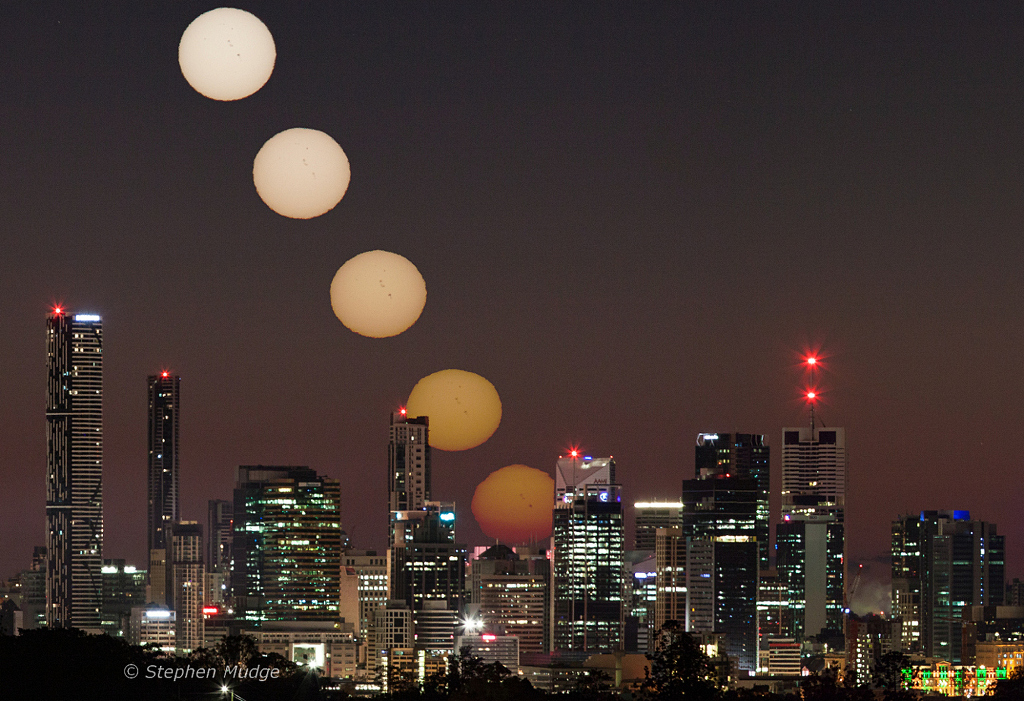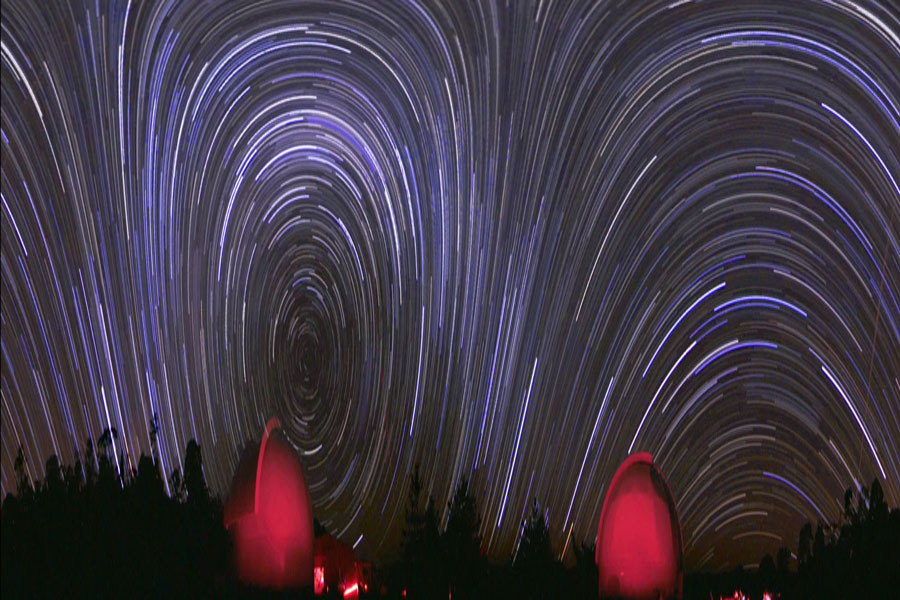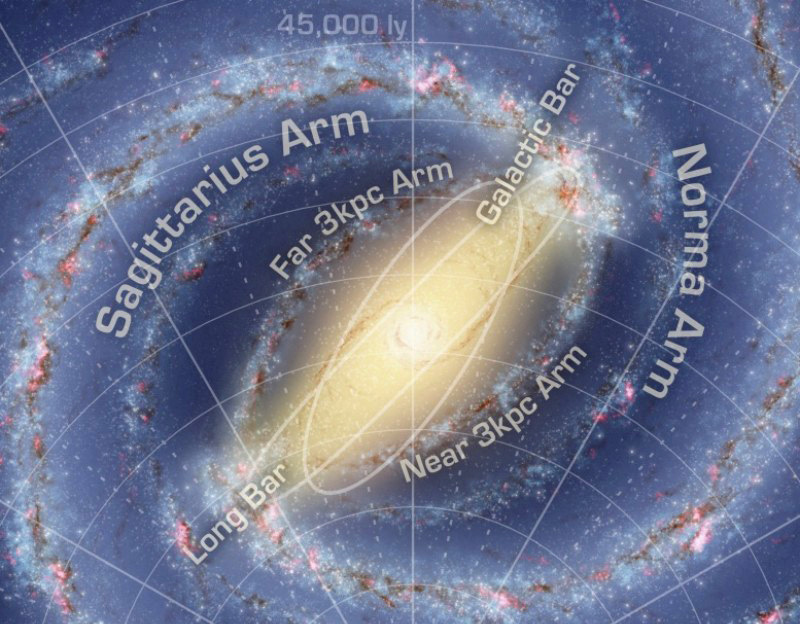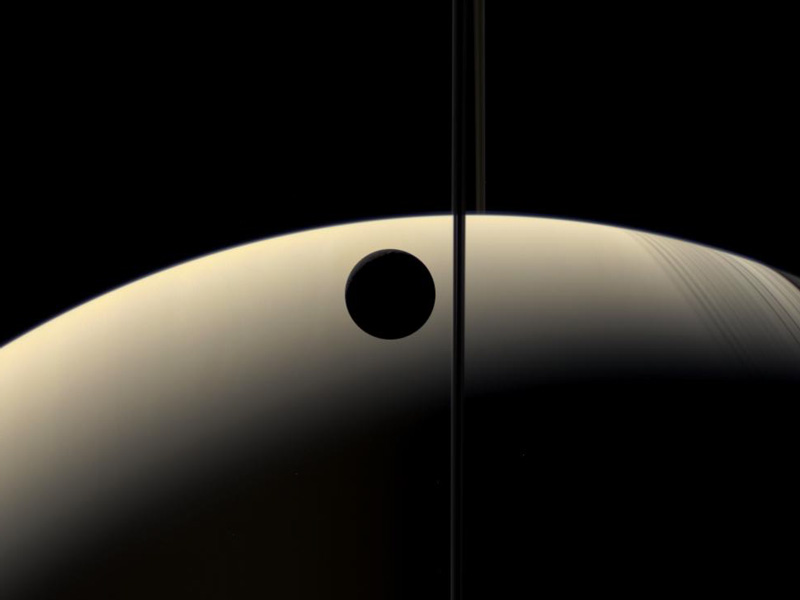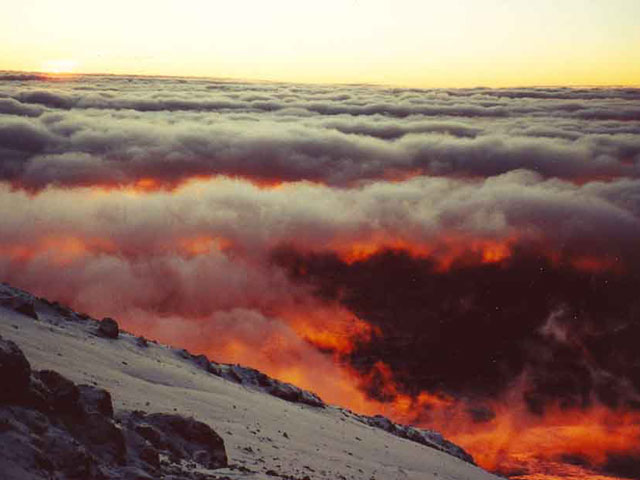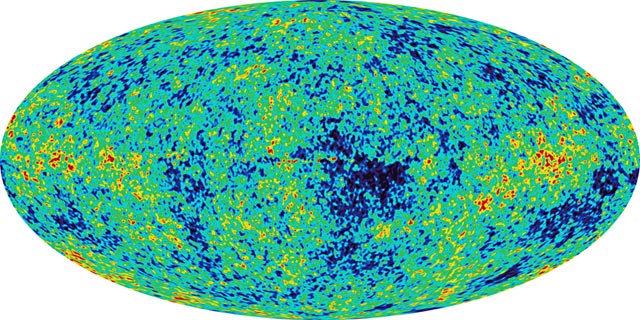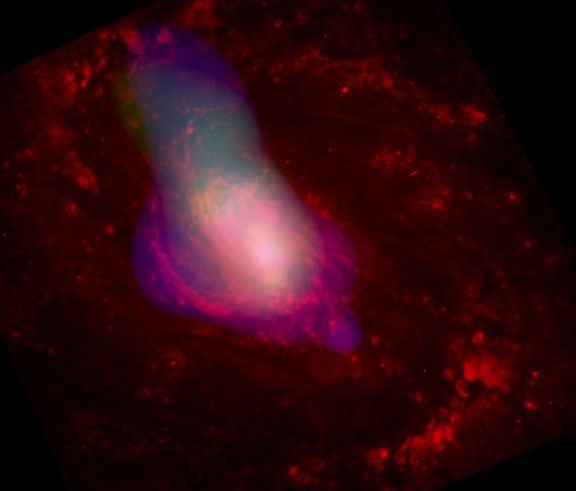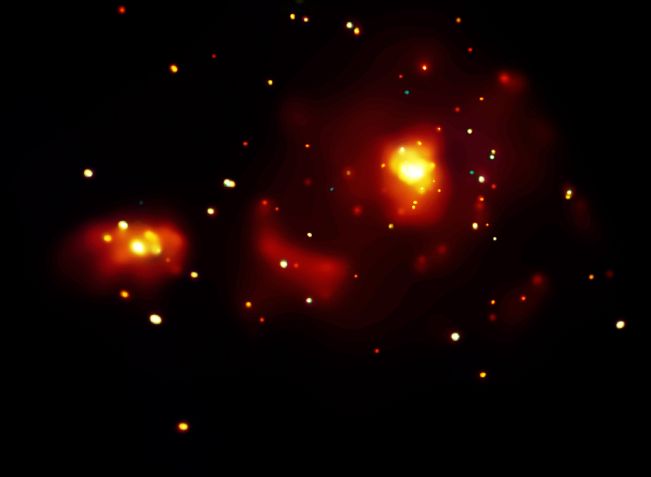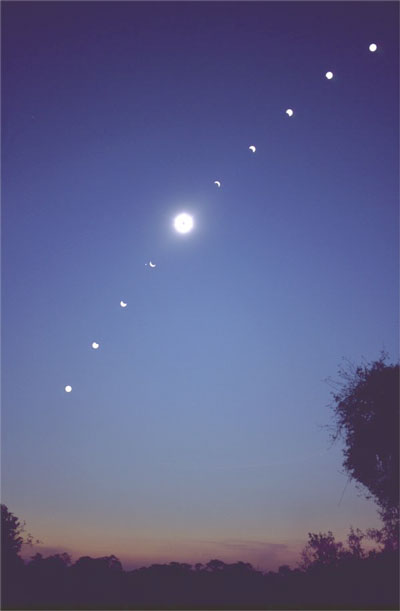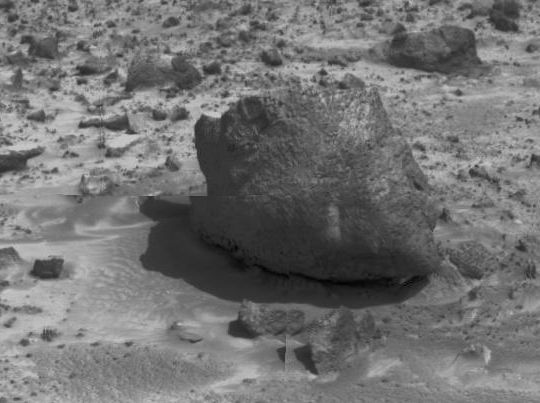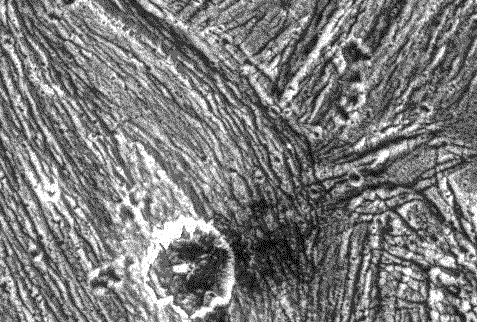| << Previous | Index | Next >> |
2015
[imghover6=http://apod.nasa.gov/apod/image/1507/Pl ... s_1080.jpg]http://apod.nasa.gov/apod/image/1507/Pl ... tatedb.jpg[/imghover6]Image Credit: NASA, Johns Hopkins Univ./APL, Southwest Research Inst.
2014 In this composite cityscape, dawn's first colors backdrop the lights along Brisbane's skyline at the southeastern corner of Queensland, Australia, planet Earth. Using a solar filter, additional exposures made every 3.5 minutes follow the winter sunrise on July 8 as planet-sized sunspots cross the visible solar disk. The sunspots mark solar active regions with convoluted magnetic fields. Even as the maximum in the solar activity cycle begins to fade, the active regions produce intense solar flares and eruptions launching coronal mass ejections (CMEs), enormous clouds of energetic particles, into our fair solar system.
2013 This complex of dusty nebulae linger along the edge of the Taurus molecular cloud, a mere 450 light-years distant. Stars are forming on the cosmic scene, including extremely youthful star RY Tauri prominent toward the upper left of the 1.5 degree wide telescopic field. In fact RY Tauri is a pre-main sequence star, embedded in its natal cloud of gas and dust, also cataloged as reflection nebula vdB 27. Highly variable, the star is still relatively cool and in the late phases of gravitational collapse. It will soon become a stable, low mass, main sequence star, a stage of stellar evolution achieved by our Sun some 4.5 billion years ago. Another pre-main sequence star, V1023 Tauri, can be spotted below and right, embedded in its yellowish dust cloud adjacent to the striking blue reflection nebula Ced 30.
2012
[imghover6=http://apod.nasa.gov/apod/image/1207/mo ... ky_960.jpg]http://apod.nasa.gov/apod/image/1207/mo ... ed_960.jpg[/imghover6]Image Credit & Copyright: Yuri Beletsky (Las Campanas Observatory, Carnegie Institution for Science)
2011
Image Credit & Copyright: Jean-Luc Dauvergne (Ciel et Espace); Music: Valère Leroy & Sophie Huet (Space-Music)
2010 What's happened to the sky? A time warp, of sorts, and a digital space warp too. The time warp occurs because this image captured in a single frame a four hour exposure of the night sky. As a result, prominent star trails are visible. The space warp occurs because the picture is actually a full 360 degree panorama, horizontally compressed to fit your browser. As the Earth rotated, stars appeared to circle both the South Celestial Pole, on the left, and the North Celestial Pole, just below the horizon on the right. The image captured the sky over Mudgee, New South Wales, Australia, including the domes of two large telescopes illuminated by red lighting. A horizontally unwarped image is visible by clicking on the image.
2009 Noctilucent or night-shining clouds lie near the edge of space. From about 80 kilometers above Earth's surface, the icy clouds can still reflect sunlight even though the Sun itself is below the horizon as seen from the ground. Usually occurring at high latitudes in summer months, the diaphanous apparitions are also known as polar mesospheric clouds and may be connected to global change in the lower atmosphere. This impressive 360 degree panorama made from 34 separate images captures an impressive display of noctilucent clouds all over the sky. It was recorded last month from Vallentuna, Sweden. The photographer reports that the display was like a noctilucent cloud storm, one of the best he's ever witnessed.
2008 A major discovery was lurking in the data. By accident, while preparing a talk on the Galaxy's spiral arms for a meeting of the American Astronomical Society, Tom Dame (Harvard-Smithsonian CfA) found it - a new spiral arm in the Milky Way. The arm is labeled in this illustration as the Far 3kpc Arm, located at a distance of 3 kpc (kiloparsecs) or about 10,000 light-years from the galactic center, on the opposite side from the Sun. Along with the Near 3kpc Arm whose presence was known since the mid 1950s, the counterpart inner arms now establish that the galaxy has a simple symmetry. The arms are defined by shocked interstellar gas flowing along both sides of the Milky Way's central bar. Dame and his collaborator Patrick Thaddeus recorded the presence of both inner spiral arms in their radio data tracking emission from carbon monoxide molecules along the galactic plane. How much star formation goes on in the counterpart arms? Despite this depiction of stars and star forming regions along the arms, the last attempt to search for star formation in the Near 3kpc Arm was in 1980 and didn't turn up any. The discovery of the Far 3kpc Arm has renewed interest in this and other questions about the center of the Milky Way.
2007
[imghover6=http://apod.nasa.gov/apod/image/0707/sa ... der777.jpg]http://apod.nasa.gov/apod/image/0707/sa ... ion777.jpg[/imghover6]Credit & Copyright: Laurent Laveder (PixHeaven.net)
2006 Soft hues, partially lit orbs, a thin trace of the ring, and slight shadows highlight this understated view of the majestic surroundings of the giant planet Saturn. Looking nearly back toward the Sun, the robot Cassini spacecraft now orbiting Saturn captured crescent phases of Saturn and its moon Rhea in color a few months ago. As striking as the above image is, it is but a single frame from a recently released 60-frame silent movie where Rhea can be seen gliding in front of its parent world. Since Cassini was nearly in the plane of Saturn's rings, the normally impressive rings are visible here only as a thin line across the image center. Cassini has now passed the official half-way mark of its mission around Saturn, but is well situated to complete another two years investigating this complex and surprising system.
2005 Is the Roof of Africa on fire? A group hiking at 6 am near the top of Mt. Kilimanjaro watched the rising sun peak above the clouds and the horizon light up red. Don't worry -- in this case the highest volcano in Africa is not even erupting. The spectacular sunrise colors are caused by light scattering off the atmosphere and small cloud particles. If all of the scattered light that makes the sky blue were added back into the scene, the sunrise would appear Sun-colored and not so red. A similar light scattering effect involving small airborne dust particles causes sunsets on Mars to be red and has been used to determine the sizes of particles in the rings of Saturn. During this trek in 2000 November, a group of about 30 reached the Kilomanjaro summit after a six-day climb.
2004 Analyses of a new high-resolution map of microwave light emitted only 380,000 years after the Big Bang appear to define our universe more precisely than ever before. The eagerly awaited results announced last year from the orbiting Wilkinson Microwave Anisotropy Probe resolve several long-standing disagreements in cosmology rooted in less precise data. Specifically, present analyses of above WMAP all-sky image indicate that the universe is 13.7 billion years old (accurate to 1 percent), composed of 73 percent dark energy, 23 percent cold dark matter, and only 4 percent atoms, is currently expanding at the rate of 71 km/sec/Mpc (accurate to 5 percent), underwent episodes of rapid expansion called inflation, and will expand forever. Astronomers will likely research the foundations and implications of these results for years to come.
2003 At night, tilting a flashlight up under your chin hides the glowing bulb from the direct view of your friends. Light from the bulb still reflects from your face though, and can give you a startling appearance. Spiral Galaxy NGC 1068 may be playing a similar trick on a cosmic scale, hiding a central powerful source of x-rays -- likely a supermassive black hole -- from direct view. X-rays are still scattered into our line-of-sight though, by a dense torus of material surrounding the black hole. The scenario is supported by x-ray data from the Chandra Observatory combined with a Hubble Space Telescope optical image in this false-color composite picture. Optical data in red shows spiral structure across NGC 1068's inner 7 thousand light-years with the x-ray data overlaid in blue and green. A hot wind of gas streaming from the galaxy's core is seen as the broad swath of x-ray emission while material lit up by the hidden black hole source is within the central cloud of more intense x-rays. Also well known as M77, NGC 1068 lies a mere 50 million light-years away toward the constellation Cetus.
2002 Fresh from yesterday's episode, a popular pair of interacting galaxies known as the Whirlpool debut here beyond the realm of visible light -- imaged at high energies by the orbiting Chandra X-ray Observatory. Still turning in a remarkable performance, over 80 glittering x-ray stars are present in the Chandra image data from the region. The number of luminous x-ray sources, likely neutron star and black hole binary systems within the confines of M51, is unusually high for normal spiral or elliptical galaxies and suggests this cosmic whirlpool has experienced intense bursts of massive star formation. The bright cores of both galaxies, NGC 5194 and NGC 5195 (right and left respectively), also exhibit high-energy activity in this false-color x-ray picture showing a diffuse glow from multi-million degree gas. An expanded view of the region near the core of NGC 5194 reveals x-rays from a supernova remnant, the debris from a spectacular stellar explosion, first detected by earthbound astronomers in 1994.
2001 What's that dark spot on the Sun? It's the Moon. Last month, on June 21, a total solar eclipse was visible in parts of Africa. In one of the most spectacular records of this eclipse, Cees Bassa captured the setting Sun being eclipsed in a series of multiple exposures from Malambanyama, Zambia. All of the images were taken 20 minutes apart, and all but the central image were taken though a dark solar filter. Without the filter, the central image features the enormous flowing corona that surrounds the Sun. The planet Jupiter can be seen superposed just to the left of the next image after totality.
2000 The Crab Nebula is a complex shell of expanding gas. The Crab Nebula formed from a star that was seen to explode in a supernova about 1000 years ago. This two color composite image taken with the WIYN 3.5-meter telescope shows in great detail filamentary structure of the glowing hydrogen gas. Also known as M1, the center is home to a dense neutron star, a star as massive as our Sun but only the size of a city. The neutron star is a pulsar that spins thirty times a second and spits out energy that powers the nebula. The nebula is named from its likeness to a crab in an early drawing. The Crab Nebula still presents mysteries today as the total mass of the nebula and pulsar appears much less than the mass of the original pre-supernova star!
1999 What happens when a meteor hits the ground? Usually nothing much, as most meteors are small, and indentations they make are soon eroded away. 49,000 years ago, however, a large meteor created Barringer Meteor Crater in Arizona, pictured above. Barringer is over a kilometer across. In 1920, it was the first feature on Earth to be recognized as an impact crater. Today, over 100 terrestrial impact craters have been identified. Recent computer modeling now indicates how some of the Canyon Diablo impactor melted during the impact that created Barringer.
1998 The Sleeping Beauty galaxy may appear peaceful at first sight but it is actually tossing and turning. In an unexpected twist, recent observations have shown that the center of this photogenic galaxy is rotating in the opposite direction than the outer regions! Stranger still - there is a middle region where the stars rotate in the opposite direction from the surrounding dust and gas. The fascinating internal motions of M64, also cataloged as NGC 4826, are thought to be the result of a collision between a small galaxy and a large galaxy where the resultant mix has not yet settled down.
1997 This portrait of Yogi Rock, a now famous boulder on Mars, was recorded on Sol 3 by the Imager for Mars Pathfinder (IMP). Big and friendly looking like its Earth cartoon namesake Yogi Bear, Yogi Rock is a prominent visible feature at the Pathfinder landing site. Yogi and surrounding soil are being examined close up by the Sojourner robot rover. Initial attempts to approach the rock and to place Sojourner's Alpha Proton X-ray Spectrometer against it have met with some minor, but not unusual, difficulties. It is speculated that the light colored "moat-like" terrain around Yogi is the result of the evaporation of surface water deposited by ancient floods.
1996 Ganymede's surface is a wrinkled mess. As large ice-sheets shift on the moon's surface, parts of the surface buckle causing high ridges, deep furrows, and parallel grooves. This photo, taken by the Galileo spacecraft currently orbiting Jupiter, was released yesterday. The large circular feature near the picture bottom is a large impact crater. The impact that caused this large crater also caused the strange dark ejecta seen to the crater's right. The Sun illuminates the scene from the lower left. The Galileo spacecraft has also just discovered that Ganymede has a region of orbiting charged particles called a magnetosphere - a first for any moon. How Ganymede is able to generate a magnetosphere is a mystery.
1995 The famous "Einstein Cross" is a case where a single object is seen four times. Here a very distant QSO happened to be placed right behind a massive galaxy. The gravitational effect of the galaxy on the distant QSO was similar to the lens effect of a drinking glass on a distant street light - it created multiple images. But stars in the foreground galaxy have been found to act as gravitational lenses here too! These stars make the images change brightness relative to each other. These brightness changes are visible on these two photographs of the Einstein Cross, taken about 3 years apart.
| << Previous | Index | Next >> |
